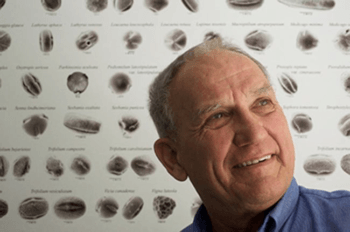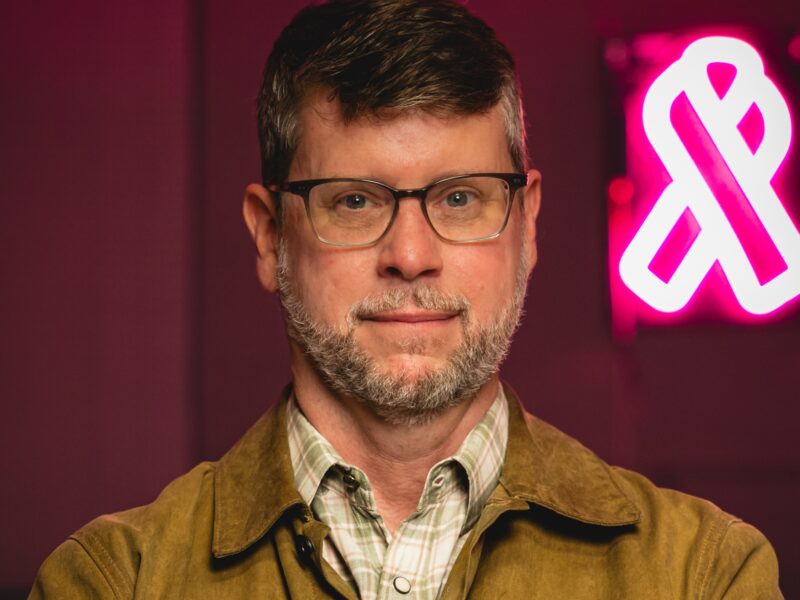Vaughn Bryant, Jack Of All Trades, Master Of Many

Need to know about the diets of prehistoric man? How about pollen analysis? Or, seeing as how it is February, what about the origins of kissing?
Varied topics all, but Texas A&M anthropology professor Vaughn Bryant can address each of them – and many others – with a great deal of expertise. From diets to kissing and just about everything in between, Bryant is routinely called on to share his knowledge on a wide array of subjects.
“What’s that old saying, jack of all trades, master of none,” Bryant says with a laugh. “You have to be willing to do things and always be open-minded. If you are willing, there is no telling what avenues will open up for you.”
That has been the case for Bryant, who joined the Texas A&M faculty in 1971 following two years on the faculty at Washington State University after he earned three degrees from the University of Texas.
Bryant received his bachelor’s degree in geography. Two years later he earned his master’s degree in anthropology and in 1969 capped his studies with a Ph.D in botany. The three degrees in three different fields helps to explain the wide range of topics Bryant can address.
“I lived all over the world when I was kid, so I always had a love of geography,” says Bryant. “When I graduated with my bachelor’s degree, I went to the anthropology department and offered my mapping skills. While I was in anthropology, they needed a graduate student to help on a project where they were studying bones, plant remains and pollen.
“I was a palynology assistant for two years. While doing that I learned a little about pollen and decided that was what I was going to do for my master’s thesis. After I finished my master’s degree I wanted to pursue it [pollen analysis] even more and get my doctorate [in botany].”
Since earning his degrees, Bryant has studied coprolites – fossilized feces – to learn about the diets of prehistoric man. He was active in Bigfoot studies in the 1970s and he has done extensive work using pollen in forensics, including the recent reopening of a 27-year-old murder case.
Bryant, who is the director of Texas A&M’s Palynology Laboratory, was asked to analyze pollen trapped in the fibers of the jacket of a young female victim who was found slain in a New York cornfield in 1979.
Although the victim was never identified, pollen analysis suggests she came from California, probably near San Diego. Now New York detectives are combing missing person reports in California for that time period hoping to learn the identity of the victim.
His efforts drew interest from media outlets around the country and he was a featured guest on the Fox News show “On the Record” with Greta Van Susteren.
It’s his work on the origin of kissing, however, that keeps him busy during this time of year. Requests to be on radio programs pour in as do interview requests from newspapers and magazines. The topic even earned him an appearance on NBC’s “Today Show” on Valentine’s Day in 1976 when he discussed kissing with Jane Pauley.
If not for one of his students, and Bryant’s inquisitive nature, he may never have become so versed on kissing.
“During one of the first classes I taught here, I asked students to list five cultural universals, things that all people in the world do,” says Bryant. “Someone said kissing. I had no idea whether or not it was universal. I told the class I had no idea, but I would pursue it.”
His early inquiries proved somewhat fruitless.
“I went to the library and found nothing,” he says. “Every search I tried came up with the rock group KISS. I just kept searching and for the last 30 years I have looked into the origin, spread, and if all people really do kiss.”
Bryant has received numerous accolades for his varied work, and he recently learned he will be honored again in April when he is presented the 2007 Fryxell Award for Interdisciplinary Research by the Society for American Archaeology.
Bryant will receive the award at the society’s annual meeting which, coincidentally, will be held in Austin.
The prestigious award is presented in recognition of interdisciplinary excellence of a scientist who need not be an archaeologist, but whose research has contributed significantly to American archaeology. It cycles through zoological sciences, botanical sciences, earth sciences, physical sciences and general interdisciplinary studies. Bryant is being recognized for his work in botanical sciences.
“It is the Nobel Prize of archeology for people working in this field,” says Bryant.
He will also be one of the speakers at the Fryxell Symposium which is held in conjunction with the meeting. The title of his presentation? “Being Miscellaneous: Life as a Paleoethnobotanist.”
And Bryant knows a thing or two about being miscellaneous.





